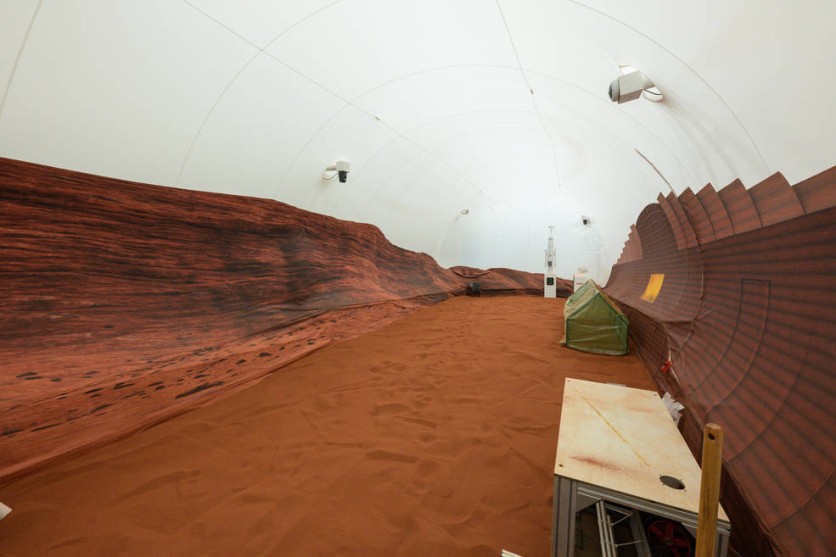NASA's ambitious project to simulate a year-long Mars mission has taken a significant step forward as four volunteers have entered the 3D-printed virtual Mars habitat at NASA's Johnson Space Center in Houston, Texas.

Simulated Mars Habitat
The mission, known as CHAPEA (Crew Health and Performance Exploration Analog), aims to replicate the challenges and conditions that astronauts would face on a real mission to Mars.
The primary objective of the mission is to evaluate the impact of Mars-related resource limitations on human health and performance in isolation and confinement.
To gather comprehensive data, the crew members will reside in a simulated Mars habitat designed to resemble the actual conditions they would encounter on the Red Planet.
The habitat, spanning an impressive 1,700 square feet, has been constructed using cutting-edge 3D printing technology.
Throughout the simulation, the researchers will recreate the various difficulties inherent in a Mars mission, including limited resources, equipment failures, communication delays, and environmental stressors.
By collecting data on both cognitive and physical performance, the team aims to gain valuable insights into the potential effects of long-duration space missions on astronauts' well-being.
NASA's ultimate goal is to establish a sustained presence on the Moon through the Artemis program, which will serve as a stepping stone for future missions to Mars.
The knowledge gained from lunar exploration will be pivotal in ensuring the safety and success of astronauts embarking on the challenging journey to the Red Planet.
Meet the 4 Volunteers
The four participants selected for this simulated Mars mission were chosen through NASA's rigorous selection process. Let's meet the members of the crew:
Kelly Haston, the commander of the mission, is a research scientist with a strong background in modeling human disease. Her expertise lies in stem cell-based projects focused on infertility, liver disease, and neurodegeneration.
Ross Brockwell, the flight engineer, is a structural engineer and public works administrator. With extensive experience in infrastructure, building design, and organizational leadership, he brings valuable expertise to the team.
Nathan Jones, the medical officer, is a board-certified emergency medicine physician specializing in prehospital and austere medicine. His experience as an emergency medicine physician and his academic role at the Southern Illinois University School of Medicine make him a crucial asset in managing medical emergencies during the mission.
Anca Selariu, the science officer, is a microbiologist serving in the US Navy. Her research experience spans various fields, including viral vaccine discovery, prion transmission, gene therapy development, and infectious disease research project management.
As the crew settles into their simulated Mars habitat, they will undergo numerous activities, including crop growth, simulated spacewalks, habitat maintenance, and scientific experiments.
This immersive experience will provide NASA with invaluable insights into the physical and psychological challenges that astronauts may face on a real mission to Mars.
NASA's pioneering effort to simulate a year-long Mars mission marks a significant milestone in the agency's pursuit of deep space exploration. By meticulously studying the effects of extended space travel on human health and performance, NASA aims to pave the way for successful human missions to Mars in the not-too-distant future.





